In Stock & Ready to Ship!
The C150 Plus offers the largest capacity in the Vectorfog portable ULV fogger lineup.
Forget paint sprayers and the other foggers you're used to seeing at most hydro shops - this fogger is a game changer! For the price, quality and effectiveness, you won't find a better deal or better piece of equipment anywhere - period.
So you've got the best pesticide, fungicide or foliar spray around - that's great. But it doesn't mean much if you can't deliver it to every square millimeter of both the upper and lower surface of each and every leaf. It only takes one spider mite that your conventional sprayer missed to turn into another epidemic 3 weeks later. Have a fogger like this makes Azamax and other organic pesticides seem like Avid or Forbid. When it comes to spraying volume means nothing, coverage means everything. You don't need to drench your plants (in fact, in most cases you do not want to do that), but you do need to cover as much surface area as possible. That's where Vectorfog ULV fogging machines earn their keep.
Lighter and 10dB quieter than previous models, the new VectorFog C150 has been redesigned to offer the ultimate in fogging performance.
Specs: Voltage: 120V, Frequency: 50/60Hz
Plug type: NEMA 5 (international customers may need to purchase a plug adapter locally)
In Stock & Ready to Ship!
The C150 Plus offers the largest capacity in the Vectorfog portable ULV fogger lineup.
Forget paint sprayers and the other foggers you're used to seeing at most hydro shops - this fogger is a game changer! For the price, quality and effectiveness, you won't find a better deal or better piece of equipment anywhere - period.
So you've got the best pesticide, fungicide or foliar spray around - that's great. But it doesn't mean much if you can't deliver it to every square millimeter of both the upper and lower surface of each and every leaf. It only takes one spider mite that your conventional sprayer missed to turn into another epidemic 3 weeks later. Have a fogger like this makes Azamax and other organic pesticides seem like Avid or Forbid. When it comes to spraying volume means nothing, coverage means everything. You don't need to drench your plants (in fact, in most cases you do not want to do that), but you do need to cover as much surface area as possible. That's where Vectorfog ULV fogging machines earn their keep.
Lighter and 10dB quieter than previous models, the new VectorFog C150 has been redesigned to offer the ultimate in fogging performance.
A new specially designed air intake on the front of the machine now reduces the fogger's core temperature by 20°, enhancing its performance under long working conditions. The overall air pressure of the machine has also been enhanced, allowing a spray distance of up to 8 metres at an angle of up to 80°. With a new larger 6 litre tank, 1250 Watt Samsung motor and a fully adjustable droplet size from 5-50 microns, the C150 will provide years of durability and performance. Our foggers are perfect for applying most types of fungicides, disinfectants, biocides and insecticides.
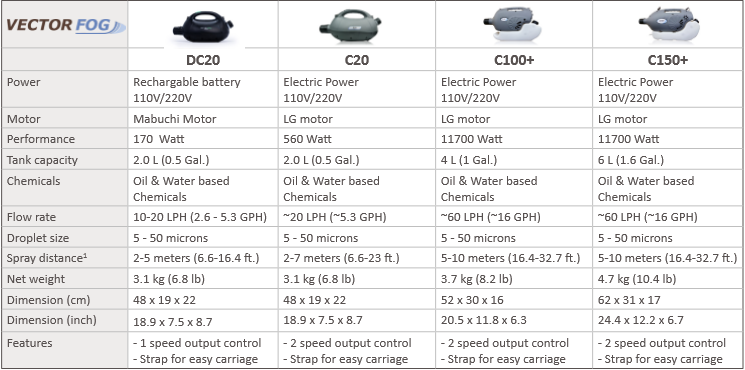
What is Ultra Low Volume (ULV) fogging?
Vectorfog fogging equipment is used predominately for the application of disinfectants, biocides, fungicides and pesticides. Our foggers generate a fog or mist formed of Ultra Low Volume (ULV) droplets between 5-50 microns (μm) in diameter. Studies have shown that droplets of this size are ideal to tackle pathogens, vector carriers and pests. In addition formulations can be applied in concentrations of 10-90% and at flow rates of up to 0.5 litres per minute (30 litres per hour) making them more efficient in the Volume Median Diameter (VMD) spectrum.
|
Main Applications
Vector and pest control
Vector carrying insects and pests such as mosquitoes, flies, fleas, mites, and cockroaches are the cause of most common biological disease transmissions in the world today. It is generally accepted by industry professionals that fogging is the most efficient method of control, as only small amounts of pesticides get used in the process.
Flying Insects
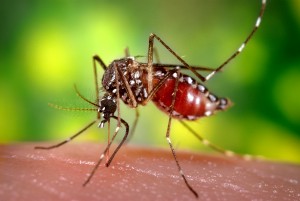 |
Mosquito Mosquitoes like the Aedes aegypti and flies such as the Black fly, form a major group of disease carrying vectors. These transmit a huge number of infectious diseases to humans, including Malaria, Dengue fever, Yellow fever, Typhus, and the Zika virus. Flying insects can also affect livestock and destroy crops having a damaging effect on agriculture. Examples include Mosquitoes, Blow Flies, Bottle Flies, Stable Flies, Fruit flies, Bean Flies and Lygus. Thermal fogging is used to control the population of these insects in towns and farms. |
Household Insect Pests
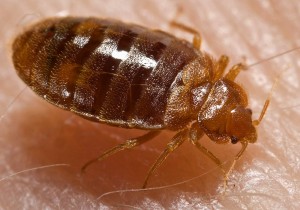 |
Bed bug Insects are the most common pest problem in households. An increasing public health problem in cities and towns, typical insect pests include Bed bugs, Fleas, Ants, Wasps, Moths and Cockroaches. Although not all of these pests carry diseases, they can spread rapidly leading to large infestations which can be difficult to control. Some of them can also cause skin irritation and allergic reactions. Fogging is used to eradicate them after an infestation has occurred. |
Livestock Parasites & Pests
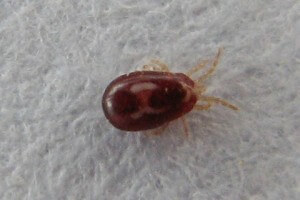 |
Red mite Livestock parasites can be detrimental to livestock production. As animal production has become more intensive, the threat of parasitic disease has also increased. These parasites range from flying insects to lice and mites which feed on the blood, skin, and hair of animals. These include Mosquitoes, Black flies, Hog Lice, Itch Mite, Ear Ticks, Sticktight Fleas and Red Mites. Hog lice for example can carry swine flu or swine pox, whilst Red Mites feed around the breast and legs of hens, causing pain, irritation, and decrease egg production. Fogging can be used to eradicate parasites living in empty sheds or stables prior to housing. Continuous disinfection of livestock housing using a fogger tends to be done thought the breading cycle. |
Examples of insecticides used for fogging
- Malathion: an organophosphate water based insecticide Ideal Equipment: Cold Fogger (interior) / Water Based Thermal Fogger (exterior)
- Synthetic pyrethroid: an organic based compound similar to natural Pyrethrins produced by the flowers of the pyrethrum plant. Piperonyl Butoxide is sometimes added to Pyrethrins to increase their potency. Ideal Equipment: Cold Fogger (interior) / Oil based Thermal Fogger (exterior).
Disinfection
Pathogenic microbes such as virus, fungi and pathogenic bacteria are the main cause of airborne or direct contact diseases affecting animals and humans. Studies show the application of disinfectants and biocides via aerosol or fogging significantly reduce the number of viable infectious pathogens. Foggers produce micro droplets that float in the air for around 10 minutes after application, reaching the most inaccessible parts where conventional cleaning or spraying can't reach.
Pathogenic Bacteria
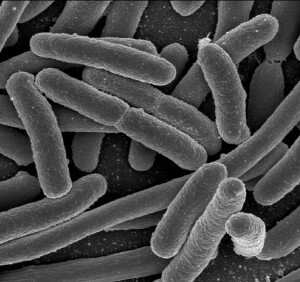 |
Ecoli Pathogenic bacteria contribute to many illnesses and infections whether food borne, water borne or air borne. These include diseases such as E-coli, MRSA, C. difficile, Campylobacter, Legionella and Salmonella. Unhygienic food preparation, water storage and air conditioning systems can harvest as well as spread these diseases. Bacteria such as MRSA and C. difficile are especially troublesome in hospitals, prisons and nursing homes, where patients with open wounds, and weakened immune systems are at greater risk of infection. |
Virus
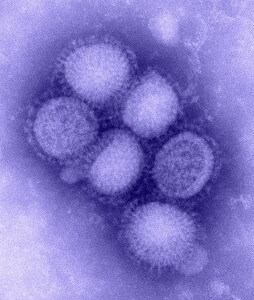 |
Influenza Viral infections make up around one third of cases of food poisoning in developed countries. Examples of these viruses include the Norovirus and Rotovirus. Other common viral infections include cold viruses and Seasonal influenza (the flu). An increasing concern due to a growing global population are animal or bird to human transmissions such as H1N1 (swine flu), and H5N1 strain of bird flu. Disinfection of surfaces using a fogger is essential to stop the spread of these infections. |
Fungi
Many fungi are parasites on plants, animals (including humans). Some fungi can cause serious diseases in humans, several of which may be fatal if untreated. These include Aspergillosis, coccidioidomycosis and mycetomas. Molds are a common component of household and workplace dust. However, when mold spores are present in large quantities, they can present a health hazard to humans, potentially causing allergic reactions and respiratory problems. Some molds can also produce mycotoxins which can pose a serious health risk to humans.
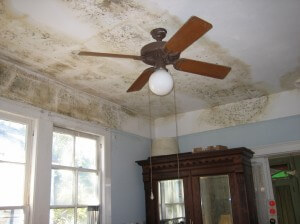 |
Mold on ceiling Mold in the home can usually be found in damp, dark or steamy areas e.g. bathroom or kitchen, cluttered storage areas, recently flooded areas, basement areas, plumbing spaces, areas with poor ventilation and outdoors in humid environments. Fogging is used to apply fungicides to target mold in places such as bathroom or kitchen ceilings, behind boilers, recently flooded areas, basements and areas with poor ventilation. |
Examples of disinfectants used for fogging
- Hydrogen peroxide with Silver Nitrate Solutions: Used in hospitals as a high level disinfectant. Usually diluted with demineralised water (ratio 200:800 mg). The silver nitrate makes it less susceptible to allergic reactions.
- Potassium peroxymonosulfate (commercial names include Virkon or Trifectant): Is a multi-purpose disinfectant that can be used anywhere to control pathogens.
- Polyaminopropyl biguanide: A Low toxicity bactericidal at very low concentrations (10 mg/l).
- Hypochlorite (chlorine derivative): A disinfectant commonly used in the food industry to fog hard to reach places. For general sanitation, a concentration of 200 parts per million (ppm) of chorine is generally used.
- Formaldehyde (formalin): A highly toxic aqueous solution that kills most bacteria and fungi (including their spores).
| SKU | 9661 |
|---|---|
| Dimensional/Billable Weight (lbs) | 11.00 |
| Length (in.) | 24.4 |
| Width (in.) | 12.2 |
| Height (in.) | 6.7 |
| Free Shipping | FREE Ground Shipping! |
| Lead Time | Normally ships in 1-2 business days |
| Brand | Vectorfog |
| Vendor Item # | C150 PLUS-110V |
| Manufacturer Warranty | Yes |






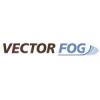
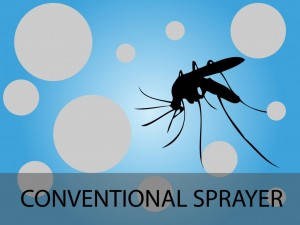
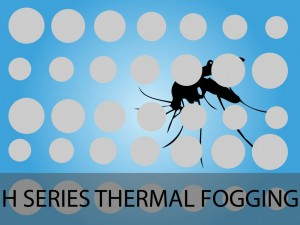
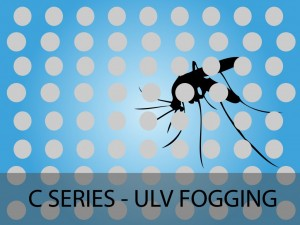



Login and Registration Form